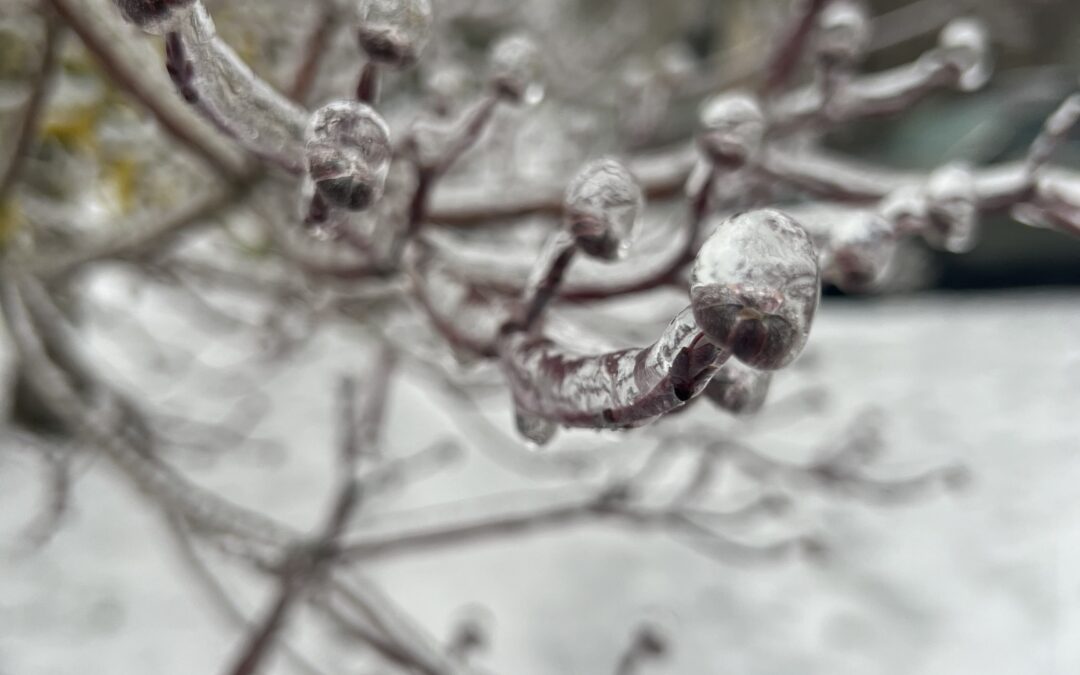PC: Bryan Jacobs
Columbia Springs staff have been home since Friday afternoon, due to the treacherous weather conditions that rolled in over the weekend. Being at home has given me time to reflect on the power of nature, in particular ice storms.
Vancouver, Washington, and the surrounding metro areas, have a rich history shaped by the diverse tapestry of its climate. Over the past few centuries, the region has been witness to a series of remarkable ice storms, each leaving an indelible mark on the community. Let’s embark on a journey through time, exploring the frozen chronicles that have defined Vancouver’s winter landscape.
The legendary 1837 Storm:
In 1837 a significant ice storm wreaked havoc on the Pacific Northwest. According to Colonel Frank J. Parker, a former scout for Vancouver local C.E.S. Wood, the real danger occurred about six months after the storm.
In an OregonLive article titled “When Ice Gripped Portland 110 Years Ago, Wild Tales of Earlier Destruction Swept the City” Parker is quoted as stating, “The Indians and pioneers who told me of the severe winter of about 70 years ago declared that the ice was so thick on the trees that all the big branches were pulled off and the trunks were left bare. When summer came, these fallen limbs became as dry as tinder. In some manner, fire got started in this underbrush and raced down the coast like a hurricane.”
The Icy Embrace of 1917:
As we delve into the history of ice storms in Vancouver, a significant event stands out – the winter of 1917. The OregonLive article mentioned above also provides a captivating glimpse into the challenges faced by the region during this frozen period. It not only highlights the impact on Portland but also sheds light on the shared experiences of neighboring communities, including Vancouver.
Picture (right): 1917 Ice Storm Source: Portland Archives and Records Center
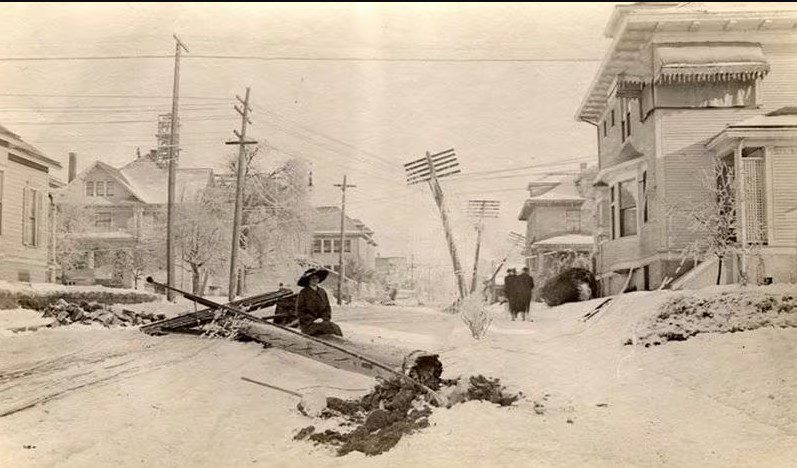
Relentless Waves of Ice in 1950:
In an Oregonian article, “Storm Ice Covers Northwest as Winter Retains Grip,” the winter storms that struck in January 1950 were characterized by a relentless assault of freezing rain and ice, creating a frozen landscape that brought the region to a standstill. Three consecutive major storms hit the area. These ongoing sub-freezing conditions and precipitation resulted in treacherous conditions, coating streets, trees, and power lines with a thick layer of ice. Vancouver and Portland, unprepared for the severity of the icy onslaught, including prolonged temperatures below freezing, faced widespread disruptions to transportation and essential services. The cities’ infrastructure struggled under the weight of the ice, leading to widespread power and water outages.
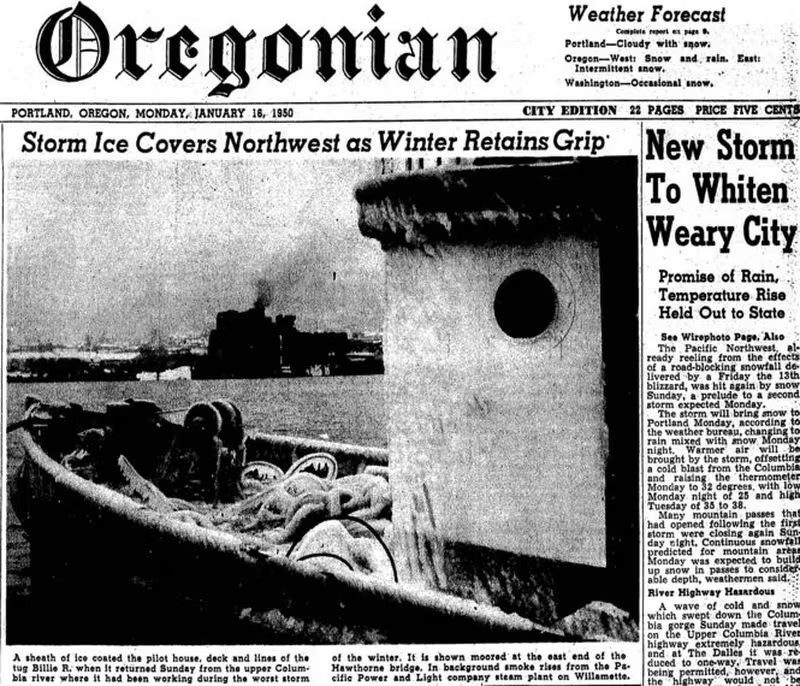
1950 Oregonian Article
Snow, Ice, FLOOD – 1996
In November 1995, the pacific Northwest saw record rainfall, saturating the ground and causing widespread flooding displacing hundreds of people. This was followed by the first cold snap of the winter season on December 9th, 1995. The region was coated with a thick layer of ice. On December 12th a windstorm ravaged the area with gusts over 100mph. Long time locals were reminded of the historic Columbus Day Storm. January of 1996 brought surprising snow events to our region, eventually covering the ground with over a foot of snow in places. The snow was followed with bitter cold, with temperatures at or below freezing for weeks. On February 3rd, freezing rain blanketed the area with a thick glaze of ice. On February 5th heavy rains brought The Great Flood.
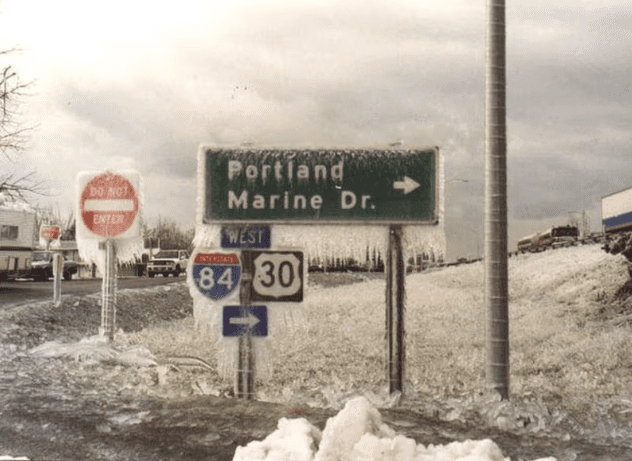
Rapidly warming temperatures, high rainfall, and all the accumulated snow and ice, plus glacial melt, led to extreme flooding that brough the Nehalem River eleven feet above flood stage levels. All regional rivers were affected. You can watch excellent coverage of the flood as it happened in this documentary made by KGW news.
Picture (left): 1996 Ice Storm Source: National Weather Service
Changing Landscapes, Changing Climates:
The geological and climatic factors that make our region in the Pacific Northwest unique contribute to the variability in winter weather. The convergence of frigid air masses from the north and moisture-laden systems from the Pacific sets the stage for the periodic arrival of ice storms. Understanding these natural processes adds depth to the narrative of Vancouver’s icy history.
Throughout the years, Clark County residents have demonstrated resilience in the face of winter’s icy grip. Area cities’ response to ice storms has evolved, with advancements in infrastructure and technology helping mitigate the impact on daily life. Tales of community support, daring rescues, and shared efforts to keep our community moving forward weave a narrative of unity in the face of adversity.
Picture (right): 1942 Ice Storm – Women ice skating on Portland streets. Source: Oregon Historical Society
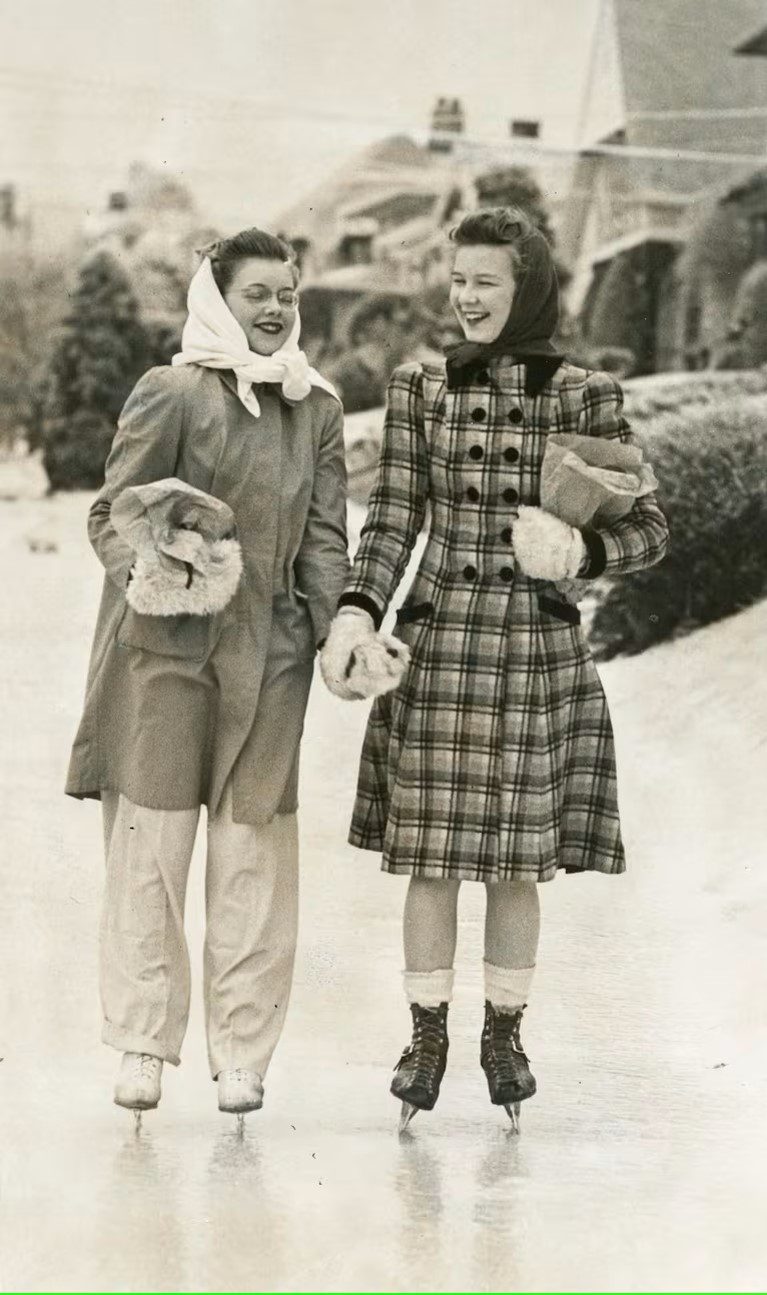
References
- Associated Press. “Storm Ice Covers the Northwest as Winter Retains Grip”. The Oregonian. 16 January, 1950. https://media.oregonlive.com/weather_impact/other/pl_011122014_1231_21692_181.pdf
- KATU News. “1996 Oregon Flood | KATU In The Archives”. KATU News Channel. 5 May, 2022. https://youtu.be/atfTudx8ERk?si=KYCPJpYiYUphR65r
- KGW News. “The Great Flood of 1996: A KGW Special”. KGW News. 12 April, 2019. https://youtu.be/Vkwz1cAy7c8?si=WdSDsED6CTZa2A1C
- Perry, Douglas. “When ice gripped Portland 110 years ago, wild tales of earlier destruction swept the city”. The Oregonian. 17 January, 2017, https://www.oregonlive.com/history/2017/01/as_ice_gripped_portland_100_ye.html

